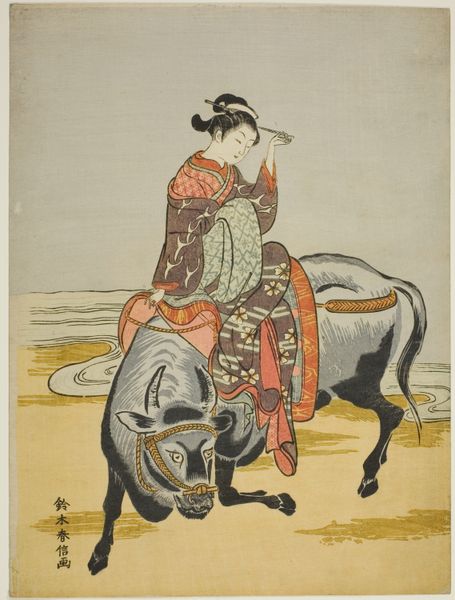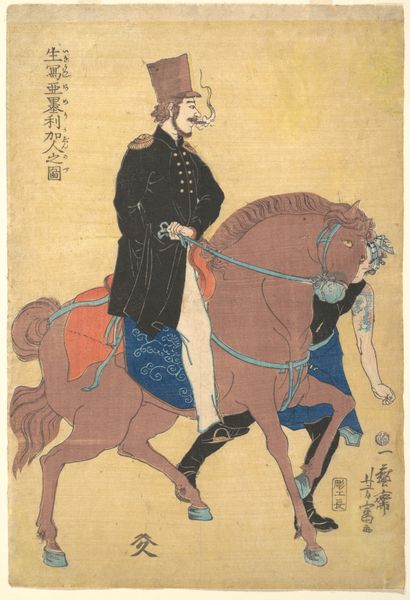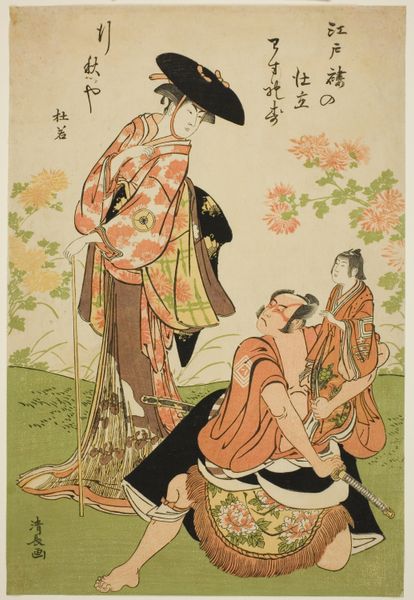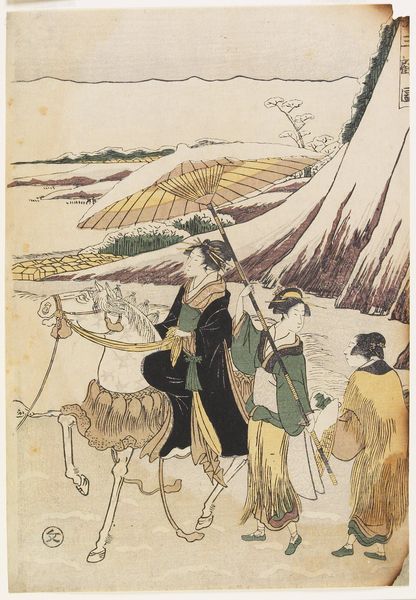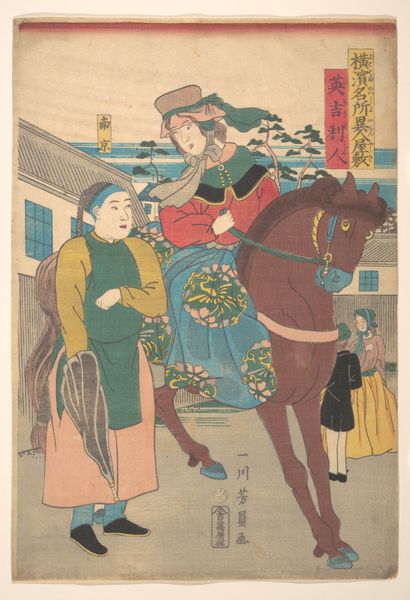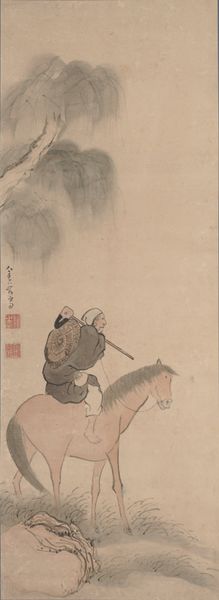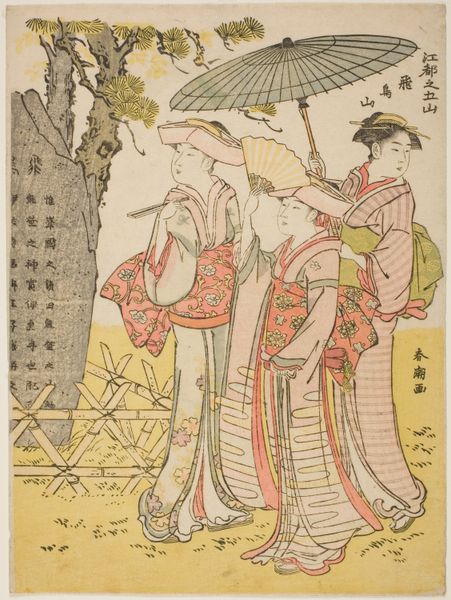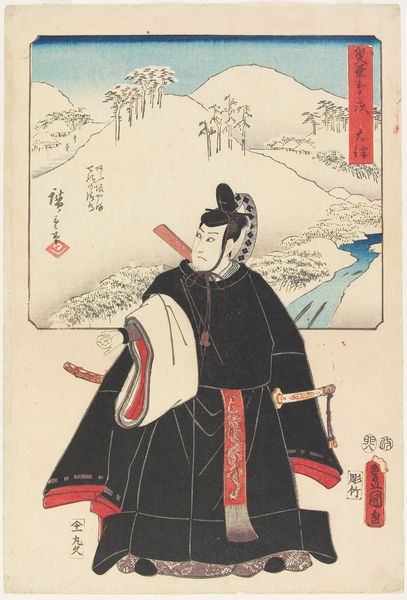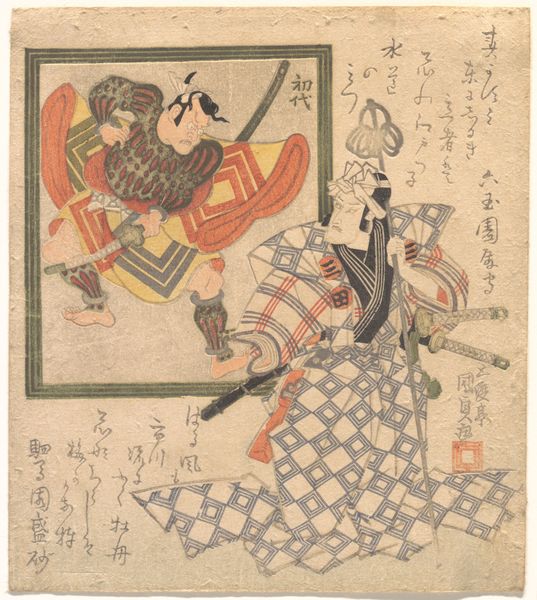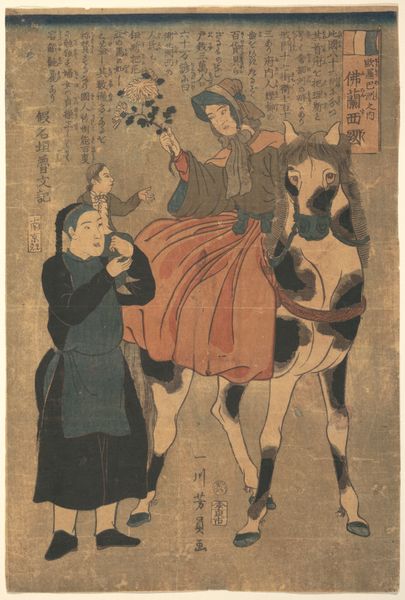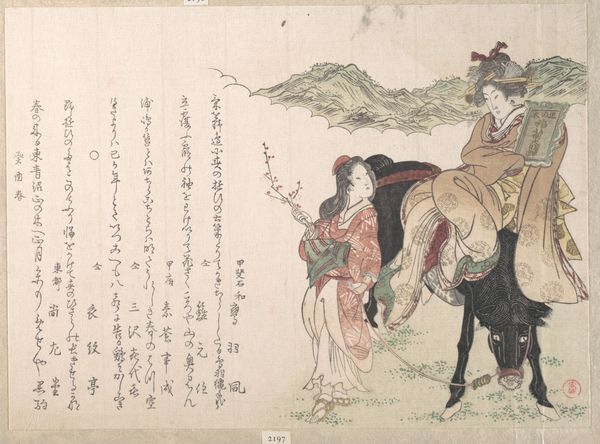
Copyright: Public domain
Curator: This woodblock print, known as *Nihon hana zue*, was created by Ogata Gekko in 1896, showcases figures amid a soft, watercolor-like landscape. It's a splendid example of ukiyo-e style from the late Meiji period. What catches your eye? Editor: Hmm, I immediately get a sense of quiet contemplation, almost melancholy. The figure on horseback seems lost in thought. Is he riding away, or perhaps towards something? It feels like a turning point, you know? Curator: It could well be either. The blossom trees frame the central figure but they're out of focus as if the man’s world, the figure on the horse is where Gekko wants us to linger. He is adorned in vibrant patterns while his servants are less noticeable and that creates a separation and loneliness that could hint to isolation. Editor: Yes, that man's gorgeous kimono! You see how the details are not that crisp, and that blurs the subject into the landscape which almost tells you that he's very weary of it all? I mean, who wouldn't be at that age! Also, there are those three figures there huddled almost seeking comfort with one another. The samurai on the horse may be their patron. It also highlights a social commentary, too. Curator: Absolutely. The details of the blossoms, though delicate, may symbolise something too: transient beauty. This can be seen to comment on mortality as Japan transitioned into a new period and its past traditions were fading away with industrialization and Western ideals being the new fashion. Ogata seems to look backwards in search of answers but knowing that one is set for loss and decline of past greatness. Editor: So true! Plus, that open landscape, so soft, feels expansive and uncertain. Makes me wonder where his narrative leads, and how we're all caught between places. The light palette too evokes serenity despite any heavy meanings we derive from it! Curator: Indeed. *Nihon hana zue* isn’t just a pretty landscape. It embodies both individual reflection and a nation's broader transition into a modern world, burdened and beautified by it. Editor: Thanks for illuminating this subtle narrative—so much more beneath the watercolor wash! Now, I have something to meditate on for the day.
Comments
No comments
Be the first to comment and join the conversation on the ultimate creative platform.
